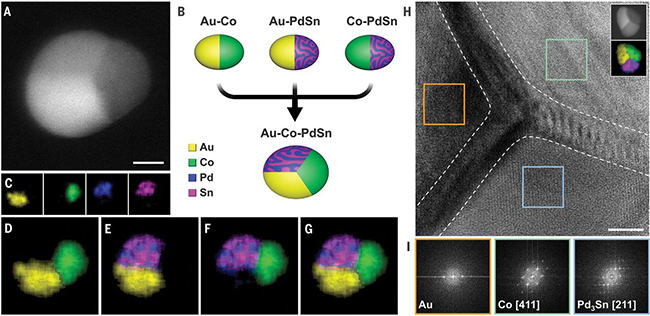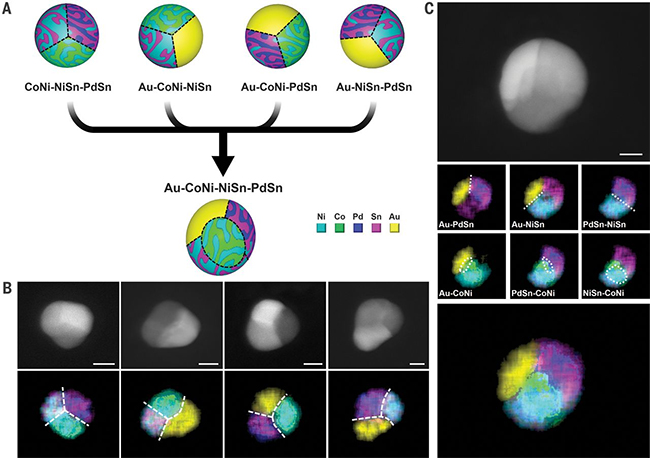New Publication in 'Science'
"Interface and heterostructure design in polyelemental nanoparticles"
NUANCE's Director, Vinayak P. Dravid, is co-author, along with IIN Director Chad A. Mirkin and Engineering Professor Chris Wolverton, Peng-Cheng Chen and Mohan Liu as first authors, of a new study that was published in the March 1 issue of the journal Science. The study centered on Nanomaterials that form as heterostructures and is being called a new blueprint for understanding and predicting polyelemental, multiphasic nanoparticles, optimizing their use for a broad range of scientific applications.
From the paper's abstract: "Multielement nanoparticles can now be synthesized through a variety of routes, but how thermodynamic phases form in such structures and how specific interfaces between them can be designed and synthesized are still poorly understood. We explored how palladium-tin alloys form mixed-composition phases with metals with known but complex miscibilities. Nanoparticles with up to seven elements were synthesized, and many form triphase heterostructures consisting of either three-interface or two-interface architectures. "
You can read the Northwestern Press release here or read the whole publication on Science's website.
NUANCE's equipment was used inteh creation of the images. In the image below, Figure 1, (A) was taken using the Hitachi HD-2300A, (C)-(G) Energy-dispersive X-ray spectroscopy (EDS) elemental mapping was taken on the HD-2300A. The uniqueness is that this microscope has two EDS detectors for simultaneous signal collection, allowing for more rapid elemental analysis on nanostructures. (H) high-resolution transmission electron microscopy (HRTEM) image from JEOL ARM300F in NUANCE. It allows for sub-nm lattice resolution imaging of crystals and identification of crystal structures.



